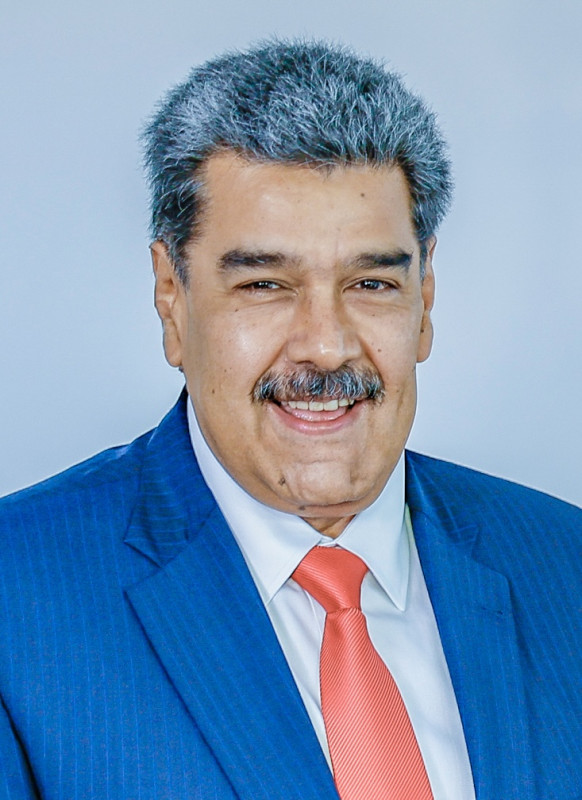Idaho is a landlocked state in the Pacific Northwest/Mountain West of the US, bordering six other states and a Canadian province. Its capital and largest city is Boise. With a land area of 83,569 sq mi, it's the 14th largest state. Its population is approximately two million, ranking it as the 13th least populous and 7th least densely populated state in the US.
1919: Potato prices in Idaho
In 1919, a bushel of potatoes sold for $1.51 in Idaho, prior to the Great Depression.
1929: Idaho farmer's annual income
In 1929, Idaho farmers had an annual income of $686, before the impact of the Great Depression.
1932: Great Depression impact on Idaho
In 1932, during the Great Depression, Idaho was hit hard as prices for major crops plummeted. For example, a bushel of potatoes brought only ten cents compared to $1.51 in 1919, and farmers' annual income dropped from $686 in 1929 to $250.
July 28, 1934: Record high temperature in Orofino
On July 28, 1934, Idaho's all-time highest temperature of 118 °F (48 °C) was recorded in Orofino.
January 18, 1943: Record low temperature at Island Park Dam
On January 18, 1943, Idaho's all-time lowest temperature of −60 °F (−51 °C) was recorded at Island Park Dam.
1946: Four-year terms for statewide elected officials
Since 1946, statewide elected constitutional officers in Idaho have been elected to four-year terms.
1958: Democrats held the majority in the House
In 1958, the Democratic Party held the majority in the House (by one seat) in Idaho.
1959: Excavations at Wilson Butte Cave
In 1959, excavations at Wilson Butte Cave near Twin Falls revealed evidence of human activity, including arrowheads. These artifacts are among the oldest dated artifacts in North America.
1960: Republican control
Since 1960, both of Idaho's state legislative chambers have been continuously controlled by Republicans.
1964: Lyndon B. Johnson defeated Barry Goldwater
Idaho has not supported a Democrat for president since 1964, when Lyndon B. Johnson defeated Barry Goldwater in the state by fewer than two percentage points.
1965: Introduction of sales tax
In 1965, the sales tax was introduced in Idaho at 3%, which was easily approved by voters.
1966: Inspector of Mines
The last contested election for Inspector of Mines, an originally elected constitutional office, was in 1966.
1971: Governorship from 1971 to 1995
The Democratic Party held the governorship in Idaho from 1971 to 1995.
1974: Church's Victory
Frank Church's 1974 victory was the last win for the Democratic party for either Senate seat in Idaho.
1974: Inspector of Mines done away with
In 1974, the position of Inspector of Mines was done away with entirely in Idaho.
1976: Republican margins were narrower
In 1976, Republican margins were narrower in Idaho.
1983: Sales tax remained at 3%
Idaho's sales tax remained at 3% from its introduction in 1965 until 1983.
1990: Population growth
From 1990 to 2010, Idaho's population increased by over 560,000 (55%).
1990: State gambling lottery
Idaho's state gambling lottery contributed $333.5 million in payments to all Idaho public schools and Idaho higher education from 1990 to 2006.
1990: Nampa's population
In 1990, Nampa's population was under 29,000.
1991: Expansion of commercial base in Idaho
Beginning in 1991, Idaho expanded its commercial base to include the science and technology sector.
1992: Republican margins were narrower
In 1992, Republican margins were narrower in Idaho.
1994: Idaho state controller
Since 1946, statewide elected constitutional officers in Idaho have been elected to four-year terms and the Idaho state controller was formerly the Auditor before 1994.
1995: Governorship from 1971 to 1995
The Democratic Party held the governorship in Idaho from 1971 to 1995.
2001: Science and technology sector percentage of Idaho's Gross state product
In 2001, the science and technology sector accounted for over 25% of Idaho's Gross State Product.
2002: Science and technology sector percentage of Idaho's Gross state product
By 2002, the science and technology sector accounted for over 25% of Idaho's Gross State Product.
2004: George W. Bush victory
In 2004, Republican George W. Bush carried Idaho by a margin of 38 percentage points and with 68.4% of the vote, winning in 43 of 44 counties.
2006: State gambling lottery
From 1990 to 2006, Idaho's state gambling lottery contributed $333.5 million in payments to all Idaho public schools and Idaho higher education.
2007: Time zone amendment
In 2007, an amendment corrected a legislative error that had theoretically placed southern Idaho in the Central Time Zone, reaffirming its place in the Mountain Time Zone.
2008: Barack Obama's 36.1 percent showing
In 2008 Barack Obama's 36.1 percent showing was the best for a Democratic presidential candidate in Idaho since 1976.
2008: Religious affiliations of Idahoans
The Pew Research Center on Religion & Public Life reported the self-identified religious affiliations of Idahoans over the age of 18 in 2008.
2008: Minnick's victory
Walt Minnick's 2008 victory in the 1st congressional district was the last Democratic win in any congressional race in Idaho.
2010: Largest denominations
According to the Association of Religion Data Archives, in 2010 the largest denominations by number of members in Idaho were The Church of Jesus Christ of Latter-day Saints, the Catholic Church, the non-denominational Protestants, and the Assemblies of God.
2010: Nampa's population growth
By 2010, Nampa's population had grown to over 81,000.
2010: Idaho's population increase since 2010
Idaho's population had an increase of 186,626, or 11.91%, since 2010.
2010: U.S. census
The 2021 population of Idaho was a 21% increase since the 2010 U.S. census.
2014: Religious affiliations of Idahoans
The Pew Research Center on Religion & Public Life reported the self-identified religious affiliations of Idahoans over the age of 18 in 2014.
2016: Employment statistics
As of 2016, Idaho's total employment was 562,282, and the total employer establishments were 45,826.
2018: Top countries of origin for immigrants
According to the American Immigration Council, in 2018, the top countries of origin for Idaho's immigrants were Mexico, Canada, the Philippines, China, and Germany.
2018: Brad Little elected governor
Brad Little was first elected governor of Idaho in 2018.
2018: Idaho's population
In 2018, Idaho had an estimated population of 1,754,208, which was an increase of 37,265 from the prior year.
2018: As of 2018
This entry relates to information available as of 2018.
2019: Identification of Late Upper Paleolithic site at Cooper's Ferry
In 2019, archaeologists identified a Late Upper Paleolithic site at Cooper's Ferry in western Idaho, near Cottonwood. Evidence suggests that people lived in the area 15,300 to 16,600 years ago, and that these people may have arrived via a Pacific coastal route.
2020: Installed wind power
As of 2020, Idaho had 973 MW of installed wind power.
2020: Idaho's population increase since 2010
From 2010 to 2020, Idaho's population increased by 17.3%, the second fastest rate of growth of any state that decade.
2020: Largest denominations
In 2020, the Association of Religion Data Archives revealed Mormons remained the largest denomination in Idaho, followed by Catholics, and non-denominational Protestantism.
July 1, 2021: Idaho's population
On July 1, 2021, the United States Census Bureau determined Idaho's population to be 1,900,923.
October 2021: COVID-19 crisis standards of care
In October 2021, during the COVID-19 pandemic, Idaho enacted statewide crisis standards of care as hospitals were overwhelmed with patients. The state had one of the lowest vaccination rates in the country at the time.
2022: Homeless population in Idaho
According to HUD's 2022 Annual Homeless Assessment Report, there were an estimated 1,998 homeless people in Idaho.
2022: Brad Little re-elected
In 2022, Brad Little was re-elected as governor of Idaho.
2022: Energy Consumption
In 2022, Idaho consumes almost four times more energy than it produces. Renewable energy sources accounted for 75% of the total electricity generated in the state. Half of Idaho's utility-scale electricity generating capacity is at hydroelectric power plants, 25% from natural gas, 17% from wind facilities, 4% from solar and 1% from geothermal.
2022: Federal ruling on abortion
In 2022, a federal judge ruled that doctors cannot be punished for performing an abortion to protect a patient's health.
2022: Religious Affiliations
In 2022, the Public Religion Research Institute's American Values Survey estimated that 72% of the population was Christian, 26% were religiously unaffiliated, and 3% were New Agers. Of the Christian population, 37% were Protestant, 24% Mormon, 9% Catholic, and 2% Jehovah's Witnesses.
April 2023: Restriction of interstate travel for abortion services
In April 2023, Idaho became the first state to restrict interstate travel for abortion services.
2024: Idaho's gross state product
In 2024, the gross state product for Idaho was $128.1 billion, and the state's per capita income that year was $61,836.
Mentioned in this timeline

Barack Obama the th U S President - was the...

George W Bush the rd U S President - is...
The United States of America is a federal republic located...
Germany officially the Federal Republic of Germany is a Western...

The Catholic Church the largest Christian church globally with over...
China officially the People's Republic of China PRC is an...
Trending

7 months ago Musk Apologizes to Trump After Susie Wiles and JD Vance Intervene.

5 months ago MrBeast Plans LeBron vs. Jordan Matchup: A GOAT Debate with a Unique Condition.

2 months ago John Mulaney announces 'Mister Whatever' tour and visits Menil Collection in Houston.

5 months ago Max Kepler Scratched from Phillies Game Due to Triceps Soreness: Injury Update

Torence Ivy Hatch Jr known as Boosie BadAzz or Boosie is an American rapper who gained fame in the Southern...

7 months ago Ja Morant Severs Ties with Lift Sports Management Amid Nets Speculation.
Popular

XXXTentacion born Jahseh Dwayne Ricardo Onfroy was a controversial yet...

Stranger Things created by the Duffer Brothers is a popular...

Carson Beck is an American college football quarterback currently playing...

Marco Rubio is an American politician attorney and diplomat He...

Nicol s Maduro is a Venezuelan politician who has served...

Candace Owens is an American conservative political commentator and author...